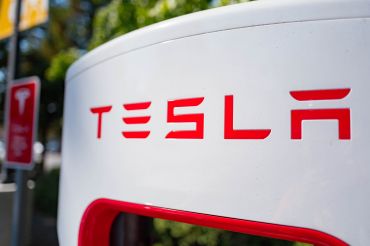Build and They Will Come: Tucker Reed and the Reinvention of Downtown Brooklyn
By Karsten Strauss January 23, 2013 7:00 am
reprintsTucker Reed knows Brooklyn. As president of the Downtown Brooklyn Partnership, he’s in charge of directing the revitalization of one of the most rapidly evolving areas in New York’s most populous borough. Among other priorities, Mr. Reed has set his sights on bolstering the Brooklyn Tech Triangle, a combination of three Brooklyn neighborhoods—Downtown Brooklyn, Dumbo and the Navy Yard—that will employ 18,000 people and support more than 40,000 other jobs by 2015, with an overall economic impact of approximately $6 billion. Mr. Reed spoke with The Commercial Observer last week about Brooklyn’s Downtown renaissance, the retail impact of new industry and why the city’s commercial real estate brokers should continue to watch Downtown Brooklyn closely.
 The Commercial Observer: What does Brooklyn’s Downtown redevelopment mean for commercial real estate?
The Commercial Observer: What does Brooklyn’s Downtown redevelopment mean for commercial real estate?
Tucker Reed: We’ve got 17 million square feet of office space, comparable to the downtowns of cities like Phoenix or Atlanta, just here in Downtown Brooklyn. It’s a pretty impressive amount of real estate to try to keep full.
We’ve had, traditionally, back-office operations for the financial industries. MetroTech was really envisioned as a back-office hub for the financial industry, real estate and insurance, and a fairly large government presence as well. Since 2000, our vacancy rate has crept up to around 10 percent—so 17 million square feet of space at 10 percent vacancy means we’ve got about a million and a half-plus square feet of space to play with to try to attract new industry and really diversify the industry base here in the long term.
We’ve really been focused on tech, with our Brooklyn Tech Triangle initiative. But it’s broader than that. It’s bigger than tech. It’s more about trying to attract the innovation economy to Downtown. That’s creative tenants, digital media, tech—anything that complements the type of community we’d like to see here and the types of industries that we’re seeing grow in Brooklyn.
How do you attract these types of industries? How do you make this an attractive place for these companies to land?
Our biggest initiative has really been focused on the Brooklyn Tech Triangle, and the brand—referring to the area as a cohesive district centered around tech and innovation. Just the name, Brooklyn Tech Triangle—like Silicon Valley, a name gives a place a certain amount of attracting power, a gravitas.
To put some real substance to that, we’ve launched an effort with our partners in neighborhoods like Dumbo and the Brooklyn Navy Yard, who are really seeing an explosive growth in these tech and creative industries. They are filling up. Dumbo as an office market is fairly small, and they’ve got almost [a zero] percent vacancy rate. The Navy Yard is constantly working on developing new space, but at this point they’re maxed out and they’ve got a waiting list of 100 companies waiting to get in there.
If we have a vacancy rate here, obviously the dots aren’t being connected in terms of making this a palatable place for those companies to start to consider in their real estate choices. But I think we made a lot of strides in 2012 on that front, landing a couple of companies like MakerBot, a 3D printing company that has now moved its front office operations to MetroTech. A type of user that one would have never thought they’d find here in Downtown Brooklyn is, all of a sudden, setting up their long-term headquarters here.
How does education play into the development of this trend?
Now there’s a buzz out there about the area as a long-term hub for innovation. [Look at] NYU’s commitment here to open their center for urban science and progress at 370 Jay Street, which was the old MTA headquarters here. Talk about an anchor tenant. It really sends a signal to the city that a university with resources and a reputation like NYU is betting on Downtown Brooklyn for the long term as a center for innovation and creativity, so much so that they’re going to open a whole new school here. That starts to fill out the narrative with some real anchor tenants that are now considering Downtown.
All of this growth has been very organic. It’s happened very grass-roots—private companies doing their own thing, doing their business, being entrepreneurs. What we’re trying to look at now is what resources we can start to bring to bear now from the public sector side that are really going to make sure that this growth crystallizes and is sustained and is not just a flash in the pan.
What did you come up with?
We launched the Brooklyn Tech Triangle study to really look at the area from four perspectives. One, we think one of our competitive advantages is the tremendous transportation infrastructure that we have here. We’ve got 13 subway lines, 15 bus lines that come through Downtown Brooklyn. And yet, the kind of intra-borough, and particularly intra-triangle transit—getting from Downtown to the waterfront or from the Navy Yard to the BAM cultural district—are a bit challenged [from] a public transit perspective. It’s easy to get into Manhattan, or the outer reaches of the borough, but it’s kind of difficult with those quicker trips.
So, we’re looking at transportation improvements, whether it’s the rerouting of buses or supporting the city’s bike share program, or perhaps a trolley system—whatever it can be that over the long term is going to link up these different points of the triangle.
We’re looking at real estate and economic policy. In this financial environment the city’s not seeing a lot of commercial development. That said, you’d like to think that there’s opportunity for commercial uses to come Downtown through the revitalization of under-utilized space, whether that’s government-owned office buildings. We have a lot of upper-floor space above our retail corridors on the Fulton Mall, Livingston Street, places like that, that have just sat vacant because the owners’ emphasis has been on retail development. Reclaiming some of those spaces for commercial office uses, particularly those smaller footprints. That product is really missing from down here.
We’ve got big floorplates in places like MetroTech and on Court Street, but the smaller footprint of 1,000 or 5,000 square feet is not a product offering that we necessarily have readily available. Those spaces above the retail corridor could become that.
Are there incentives?
We’re looking at economic incentive packages that we may want to propose over the long term to help attract companies to the area. From a work force development perspective, a lot of these companies are telling us one of their real constraints to growth is having the talent on hand to expand their businesses. Looking at opportunities, we have 12 colleges and universities here in Downtown Brooklyn. How are those schools connecting with the tech industry to make sure that they’re preparing their students for job opportunities in these growing industries? So we’re really looking at this from a whole list of perspectives.
Takes us back for moment and tell us how the Brooklyn Tech Triangle developed.
It’s been a very organic process. You look at a place like Dumbo, and it’s a telling case study on what these types of companies are looking for when they’re making their real estate choices. Long before there was a tech hub in Dumbo, there was a creative community there—artists, cultural organizations, pioneering entrepreneurs opening restaurants and bars along the waterfront to cater to that population.
Slowly, the combination of economics—the rent was cheaper than Manhattan—and neighborhood character that the creative community created became a very attractive destination for tech companies. These companies—whether it’s tech, digital media or advertising—like to be around each other.
The Navy Yard has been a bit more of a deliberate process. The city’s invested millions of dollars in capital money to bring back online light industrial and commercial office space in the Yard. Andrew Kimball, who runs the Yard, has done a tremendous job at identifying everyone from artisans to green tech companies developing the next generation of streetlights powered by wind turbines, to attract them to the Yard. He’s created a 21st-century green manufacturing park there.
What are your main initiatives in 2013?
We’re going to finish our study, hopefully this spring or summer, and then we’ll have gone through a very grass-roots process—working with companies that are here, the building owners, the local community board, the elected officials—to really identify a strategy, a blueprint if you will, for the long-term growth of the triangle.
The challenges are, one, getting those different and diverse groups talking and working together, when traditionally they don’t necessarily think of having a lot of dialogue. Beyond that it’s going to be a matter of resources. In this fiscal climate, the capital budget being what it is, if we come up with new plans for greenways or a trolley system, lining up public and private dollars to be able to see them through is going to be tough.
We’d like to think that there’s a long tradition here of the Downtown private sector really leveraging a small public investment into something much bigger. We saw it here over the last 10 years in the wake of the rezoning of 2004. The city invested $300 million in public infrastructure here—new parks, plazas, streetscapes—and the private sector responded to that with $3.5 billion of private development.
What impact will development have on retail?
Retail development in Downtown Brooklyn is already kind of cooking away. You’re seeing a lot of interest now from more diverse retail tenants than we’ve seen in the recent past. That’s everything from regional chains like Brooklyn Industries and Shake Shack to what we refer to as “back to the future” moves. Fulton Street, at one time, was a home to half a dozen department stores. Today we only have Macy’s. Seeing Century 21 signing a deal at City Point really brings the Fulton Mall back to an era when it was the central shopping hub for the entire borough.
What really drives the retail development is having a residential base here. Downtown Brooklyn has enjoyed a brownstone ring around the Downtown center forever—over 100,000 residents within a mile-square radius of Downtown—but now we’re starting to see the new influence of residents actually living in Downtown proper. That was influenced by that first wave of development that saw the new high rises along Flatbush Avenue and in Downtown proper.
We’re about to embark upon another massive wave of development here in Downtown, now that the market has recovered. We saw about 5,000 residential units built during the first wave, and now we’re set to see about another 5,000 come online in the next few years.
What’s planned for the stretch of Willoughby Street near Jay Street?
We’re excited to see some emerging restaurants opening up over there. We’re thinking about Willoughby Street as a potential restaurant row over the long term here in Downtown.
What was the old Kevin Barry’s Bar recently shut down and has been recently renovated [to become] a new place called Dining Room, which is a new restaurant and bar on that strip. We give out small grants to a lot of our small business owners to help renovate and help them stay competitive in the changing economy. We helped a small restaurant on Willoughby, in the wake of a fire, rehab their space and get back up on their feet.
We’re seeing some restaurant uses along Willoughby. I think a number of developments planned for there now are really going to put that interest into overdrive, though. And Shake Shack is also on Willoughby. Avalon Bay is building a project on Bridge and Willoughby Streets. There’s a Stahl (Organization) project that’s being built on the other side of Bridge and Willoughby, so there’s a number of new residential units that are going to be coming online in the next two or three years.


